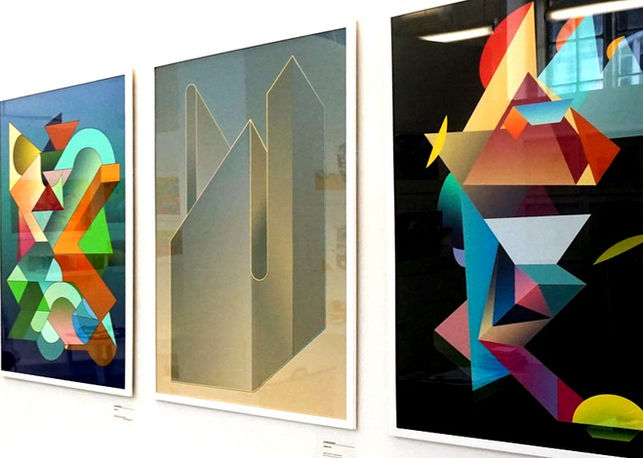
Colombian artist Camila Quintero proves to us that the richness and complexity of contemporary artistic production is inspired by various aspects of modernism, and these elements of the contemporary come with an interdisciplinary approach that brings art together with architecture, photography and design.
Aligned with the trends responsible for the emergence of modernism in Latin America, Quintero continues to carry on investigations of geometric abstraction and uses either fluid automatism than that controlled. Yet she does so by treating in an innovative and unique way the constructivist tradition that brought aesthetic modernity to Latin American countries in the mid-twentieth century, superimposing the postmodern strand on the modernist matrix towards a distorted and deconstructed geometry.
Furthermore, she hybridises this matrix by making reference to visual evolutions and the new possibilities brought to the art world by the digital and media revolution. In fact, she produces vectorial compositions in digital colours. Quintero has a professional background in the world of graphic art and formidably mixes her knowledge in this field with modernist references such as Vassily Kandinsky, the Bauhaus and even artists such as László Moholy-Nagy and Oskar Fischinger. The computer languages that exist today create virtual domains and platforms that break the barriers of the possibilities of creating images, and artists like Quintero experiment with the possibilities that the new era offers them.
Quintero's work has a psychological and sensory appeal tied to the notion of the passing of time and the changing conditions of the spatial dimension. Geometry, light, fragmentation, colour, form, transparency, superimposition, the figurative potential of abstraction and graphic symbolism are all elements with which the artist arouses the viewer's subjective response. Quintero's aim is to communicate through graphic elements and atmospheric hues, and to create 'open images', i.e. that allow people to generate their own opinions or 'visions' of the artwork.
By Kalinca Costa Söderlund













